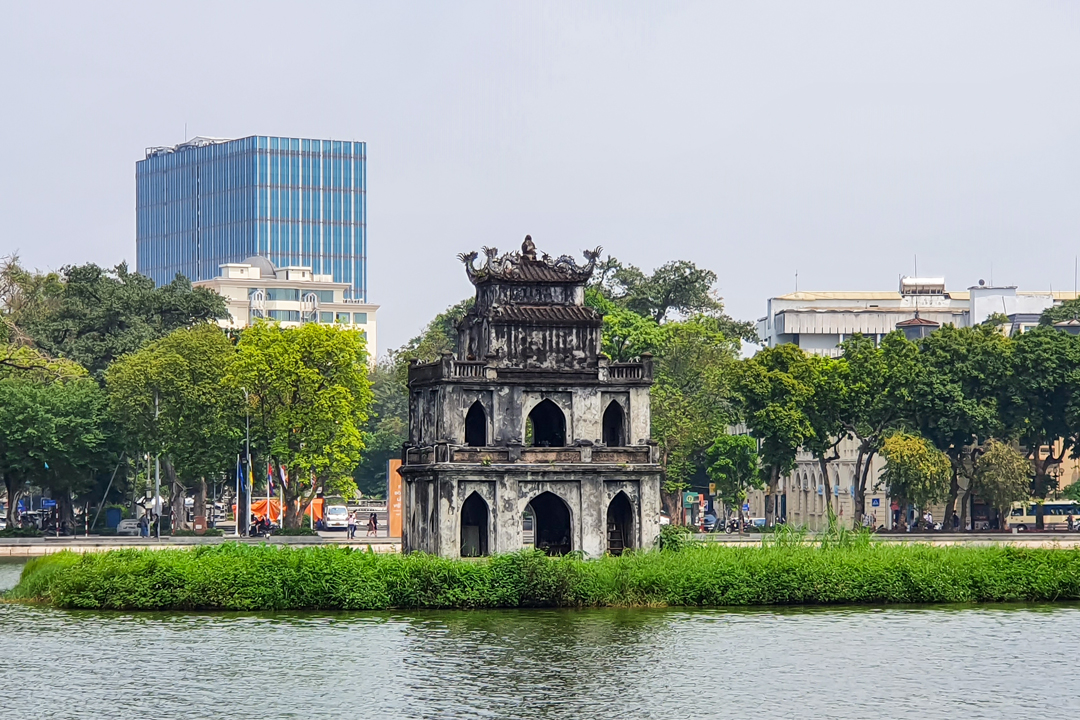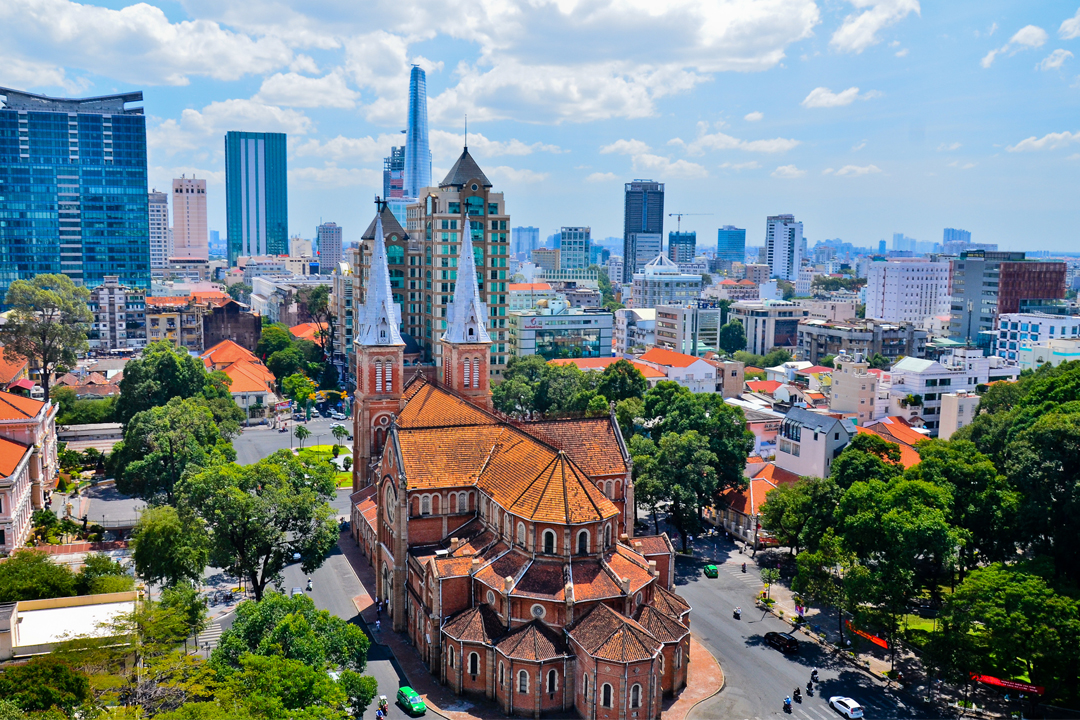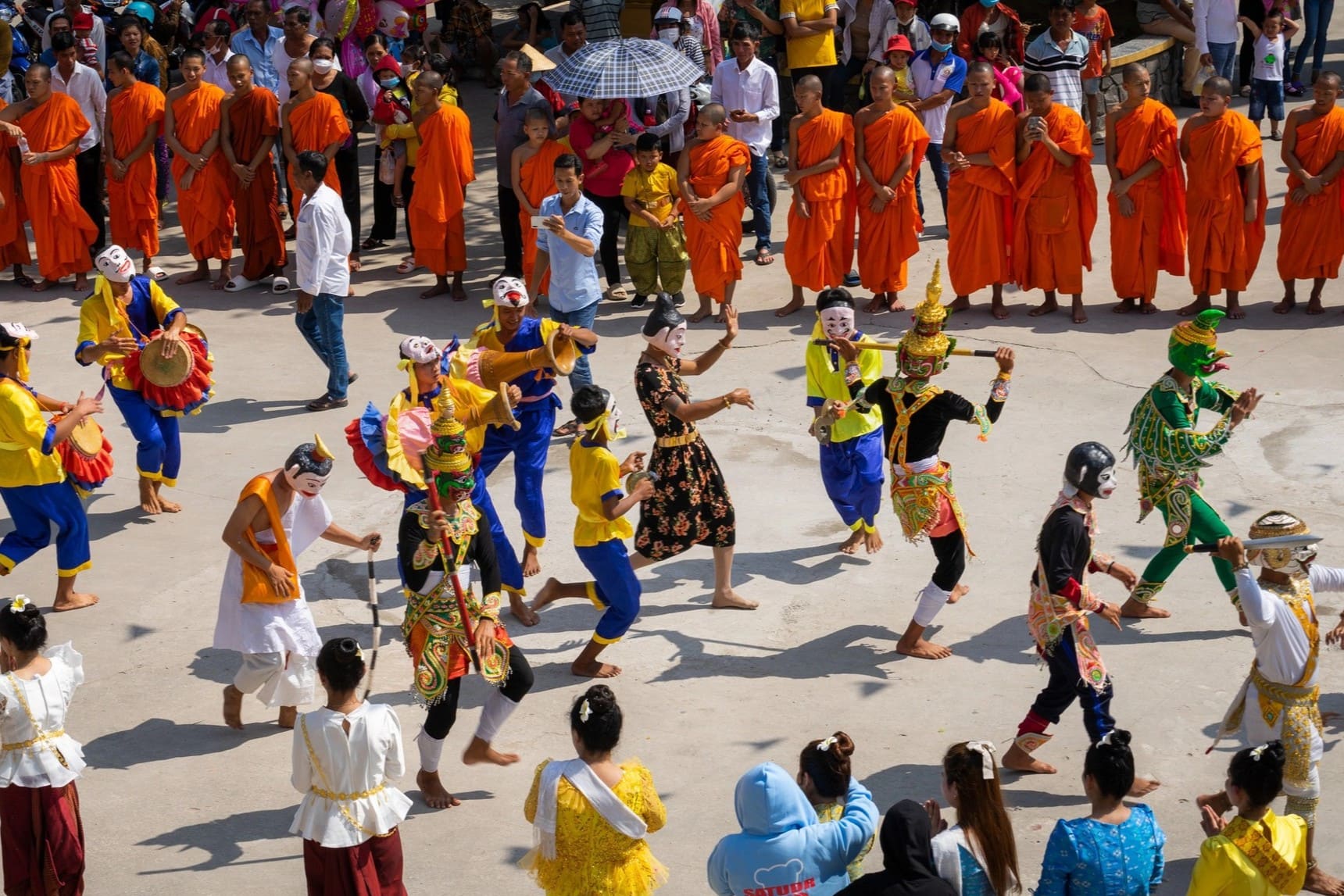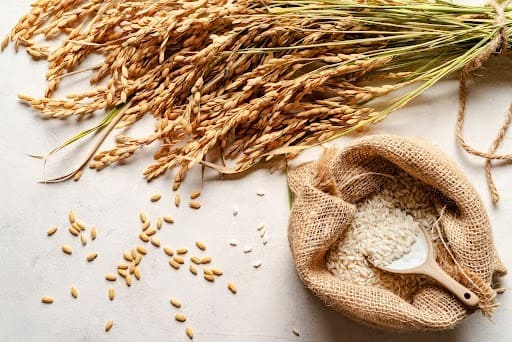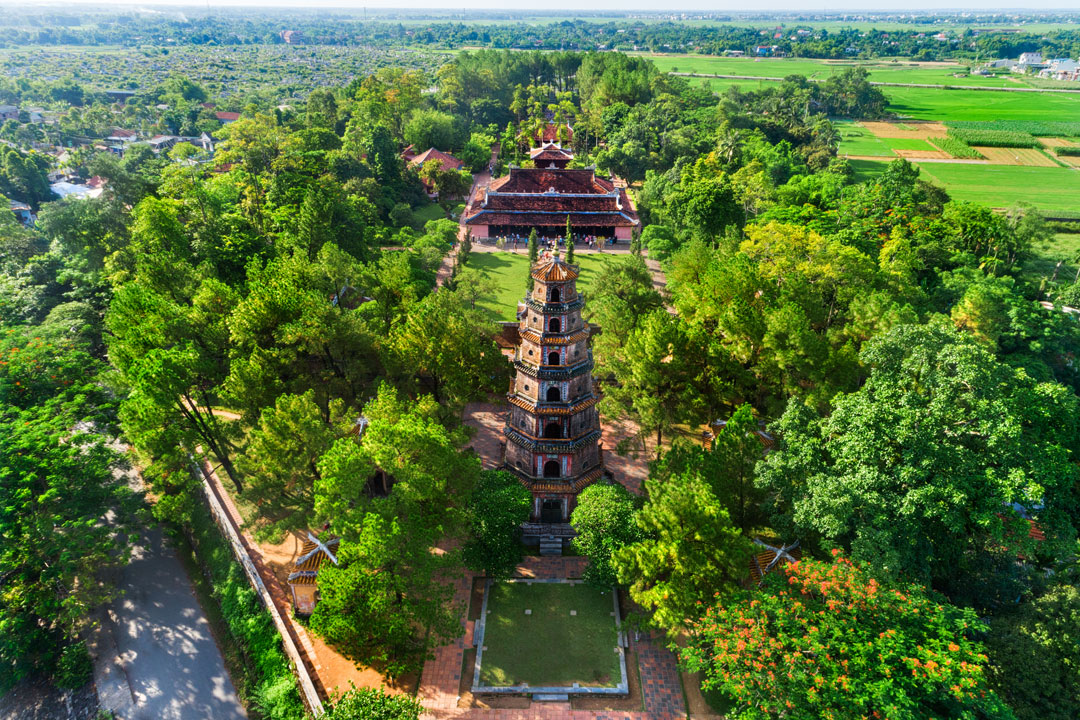Thien Mu Pagoda: History, Architecture & Travel Guide
Thien Mu Pagoda, one of Vietnam’s most revered religious sites, stands as a testament to centuries of Buddhist influence in Hue. Built-in the early 17th century, this historic temple is an architectural marvel and a place deeply intertwined with legends and spirituality. Stories of its origins, including the prophecy that led to its establishment, make it a significant destination for those fascinated by Vietnam’s rich past.
Thien Mu Pagoda blends history with classic Vietnamese Buddhist architecture, highlighted by the iconic Phuoc Duyen Tower. Inside, you will find intricate carvings, ancient relics, and a sacred atmosphere that reflects the pagoda’s religious importance. For centuries, it has been a center for Buddhist monks and practitioners, playing a vital role in local traditions and spiritual life.
Throughout the year, Thien Mu Pagoda hosts vibrant Buddhist festivals, drawing devotees and curious travelers. These events provide insight into the customs and ceremonies that shape Hue’s religious landscape. Explore Thien Mu Pagoda via a guided tour, a serene Perfume River boat ride, or stunning sunset views from the temple grounds.
To fully enjoy a visit, knowing Thien Mu Pagoda’s visitor guidelines, including dress codes and etiquette that honor its spiritual significance is essential. You will also find practical details, such as entrance fees and opening hours, making trip planning seamless.
History and legends of Thien Mu Pagoda
Thien Mu Pagoda traces its origins to the early 17th century when Lord Nguyen Hoang, the regional ruler, founded the temple after hearing a local prophecy. According to legend, a celestial old woman appeared on Ha Khe Hill, predicting that a great leader would build a pagoda to bring prosperity. Inspired by this vision, Lord Nguyen Hoang ordered its construction, making it one of Hue’s oldest and most venerated religious sites.
Over the centuries, Thien Mu Pagoda has been a witness to significant historical events. It played a crucial role in Vietnam’s Buddhist movements, particularly in the mid-20th century, when it became a center for both spiritual and political activism. A defining moment came in 1963 when monk Thich Quang Duc, associated with the pagoda, self-immolated in Saigon to protest religious persecution. His car remains preserved at the site, serving as a solemn reminder of Vietnam’s turbulent history.
The pagoda’s architecture has evolved through various renovations and expansions under different Nguyen Dynasty rulers. Its most iconic feature, Phuoc Duyen Tower, was added in 1844 by Emperor Thieu Tri and has since become a recognizable symbol of Hue. Overlooking the Perfume River, the tower draws visitors eager to explore the site’s rich spiritual and historical significance.
Beyond its historical and political relevance, Thien Mu Pagoda is also shrouded in folklore. One of its most famous legends is the “cursed love story”, which claims that couples visiting together are destined to break up. Though unproven, this superstition remains widely known among Hue residents and continues to intrigue both locals and tourists.
For those fascinated by Vietnamese history, a visit to Thien Mu Pagoda is an essential cultural experience. Nearby, travelers can explore the exquisite Khai Dinh Tomb, an architectural masterpiece blending Eastern and Western design elements.
Stepping beyond its historical roots, the pagoda’s Vietnamese Buddhist architecture embodies centuries of craftsmanship and devotion. The next section delves into the intricate architectural features of Thien Mu Pagoda, highlighting its unique structures and religious significance.
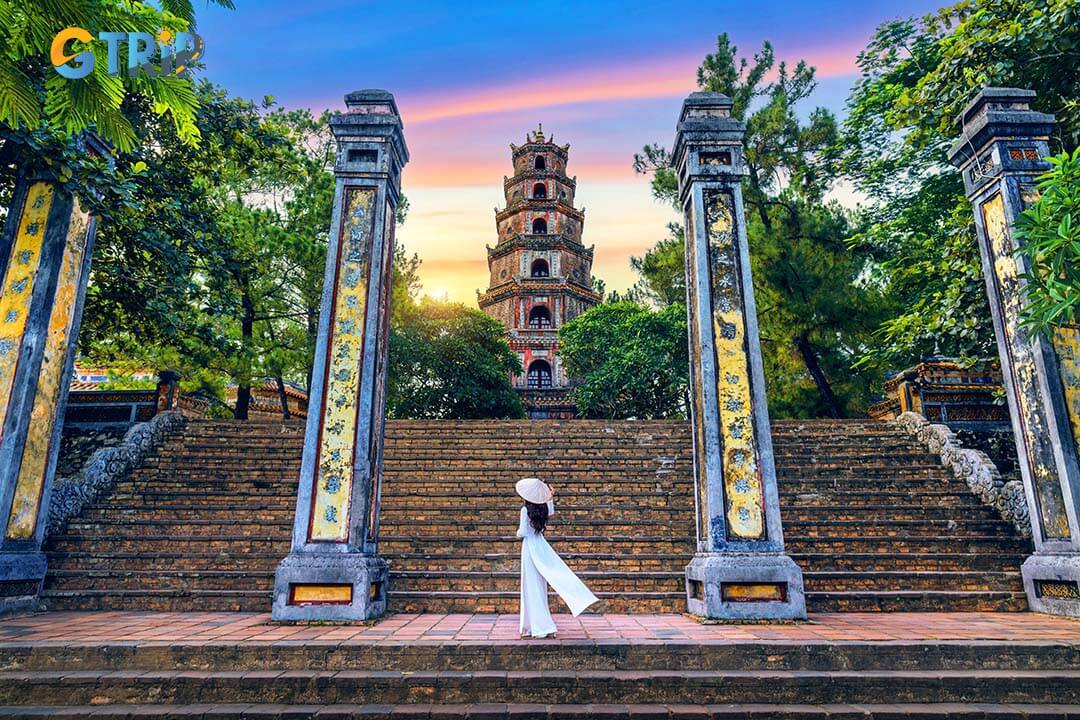
Thien Mu Pagoda, founded in the 17th century, is one of Hue’s most revered religious sites, known for its rich history, political significance, and legendary folklore
Architecture of Thien Mu Pagoda
The Thien Mu Pagoda architecture style reflects the essence of Vietnamese pagoda architecture, blending historical significance with spiritual symbolism. The most striking feature of the pagoda is the Phuoc Duyen Tower, a seven-story structure that stands as a landmark of Hue’s religious heritage. Constructed in 1844 under Emperor Thieu Tri, this octagonal tower is intricately designed, each level dedicated to different manifestations of Buddha.
Beyond the tower, the pagoda complex houses several ancient structures, including the Thien Mu Pagoda bell tower, which shelters a massive bronze bell cast in 1710. This bell, known as Dai Hong Chung, weighs over two tons and resonates across the Perfume River, adding to the temple’s tranquil ambiance. You can also explore the Dai Hung Shrine, which serves as the main hall of worship, featuring elaborately carved wooden altars and statues of Buddhist deities. The pagoda grounds are adorned with ornamental gates, stone stele pavilions, and meticulously landscaped gardens, creating a serene atmosphere for prayer and meditation.
Many visitors are drawn to Thien Mu Pagoda not only for its religious significance but also for its photogenic appeal. The symmetrical layout, coupled with the vibrant colors of its structures, makes it a popular site for capturing traditional Vietnamese aesthetics.
Beyond its architectural grandeur, Thien Mu Pagoda holds deep religious and cultural value, serving as a spiritual hub for Buddhist monks and practitioners. Understanding its historical and artistic significance provides deeper insight into why the pagoda remains an enduring symbol of Hue. This connection between architecture and devotion leads naturally to its religious and cultural significance, shaping the spiritual life of the local community.
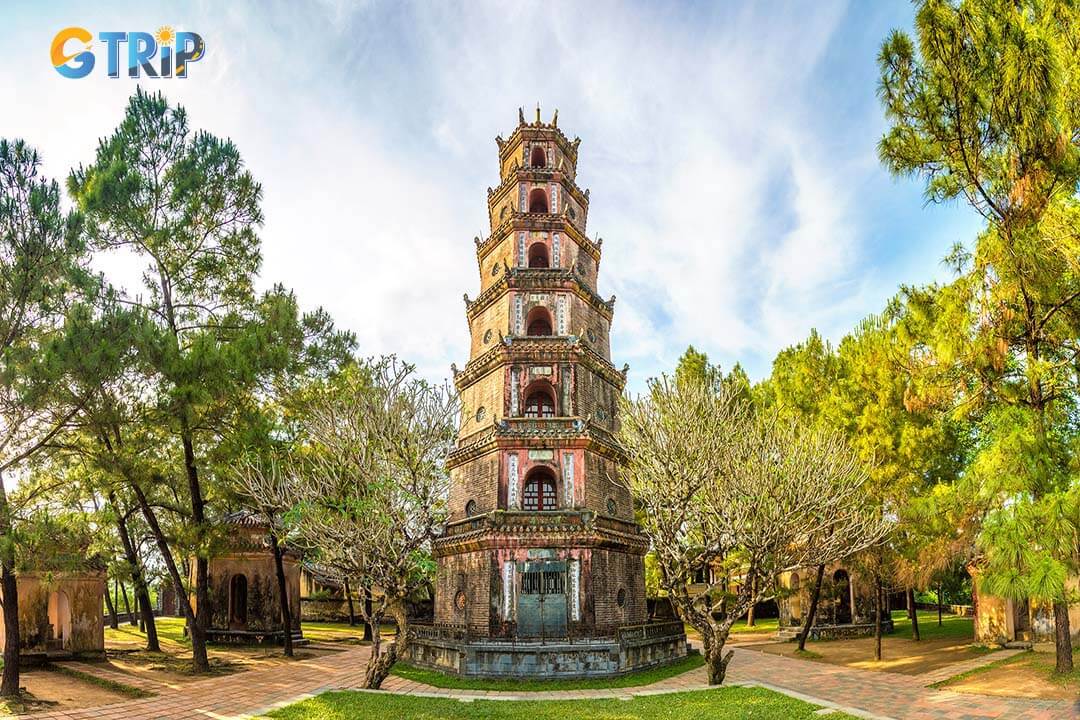
Thien Mu Pagoda showcases Vietnamese Buddhist architecture, featuring the iconic Phuoc Duyen Tower, ancient bronze bell, and ornate shrines rich in spiritual heritage
Religious and cultural significance
For centuries, Buddhism has thrived in Hue, with Thien Mu Pagoda standing as one of its most revered spiritual landmarks. More than just an architectural marvel, the pagoda remains an active monastery where monks dedicate themselves to daily rituals, meditation, and scriptural study. It serves as a sanctuary for devotees and visitors seeking spiritual enrichment.
Thien Mu Pagoda plays a vital role in preserving Buddhist teachings. Monks follow a disciplined path of mindfulness and devotion, performing daily chanting ceremonies and offering prayers for peace and prosperity. During Vesak and Ullambana, the pagoda becomes a lively hub, attracting thousands for ceremonies, lantern releases, and Dharma talks.
Among Hue’s many Buddhist temples, Thien Mu Pagoda holds a unique place due to its deep historical and cultural significance. It was a focal point of Vietnam’s Buddhist movements, particularly in the 1960s, when it became a symbol of religious resistance. The Austin car of Thich Quang Duc remains a powerful symbol of the pagoda’s fight for religious freedom.
Beyond its religious function, Thien Mu Pagoda is a cultural beacon, safeguarding traditional Vietnamese Buddhist practices. The rhythmic sounds of wooden fish drums and temple bells create a tranquil atmosphere, inviting visitors to immerse themselves in the spiritual ambience. Buddhism's core values of compassion, mindfulness, and harmony are embodied in the monks’ serenity and the temple’s tranquil surroundings.
The pagoda is also a center for cultural exchange, welcoming travelers from around the world. You can participate in guided meditation sessions or observe monastic life, gaining deeper insight into Vietnam’s Buddhist traditions. Perched atop a hill overlooking the Perfume River, Thien Mu Pagoda offers breathtaking views, enhancing the contemplative experience of those who visit.

Thien Mu Pagoda is a revered Buddhist sanctuary in Hue, where monks uphold centuries-old traditions through rituals, meditation, and ceremonies
Top 4 things to do when visiting Thien Mu Pagoda
A visit to Thien Mu Pagoda offers a blend of spiritual enrichment, historical exploration, and scenic beauty. Explore the pagoda’s architecture, capture stunning photos, or enjoy its tranquil surroundings for a memorable visit.
1. Explore the pagoda grounds and historic structures
Wandering through the Thien Mu Pagoda complex, visitors can admire its centuries-old structures, each carrying deep historical and religious significance. The Phuoc Duyen Tower, a seven-story masterpiece, dominates the skyline and serves as the most recognizable symbol of the pagoda. Beyond the tower, the temple halls house ancient Buddhist scriptures, intricate altars, and statues of revered deities. A stroll through the peaceful gardens, filled with bonsai trees and lotus ponds, allows travelers to soak in the serene ambiance.
2. Capture stunning views from iconic spots
Thien Mu Pagoda photography spots are among the most picturesque in Hue, attracting both professional photographers and casual visitors. The Perfume River backdrop provides a perfect setting for capturing the pagoda’s beauty, especially at sunrise or sunset. The pagoda’s courtyard, stone staircases, and red-brick pathways lined with towering pine trees create visually striking compositions. For those interested in cultural photography, observing the monks in their daily rituals can add a meaningful narrative to their photo collection.

Capture breathtaking shots of Thien Mu Pagoda with the Perfume River backdrop, scenic courtyards, and towering pine-lined pathways, especially at sunrise or sunset
3. Enjoy the majestic sunset over the Perfume River
A Thien Mu Pagoda sunset view is a must-see for those visiting in the late afternoon. As the sun sets over the river, the sky transforms into a canvas of warm hues, reflecting beautifully on the water’s surface. The temple grounds take on a more mystical atmosphere as lanterns light up, adding to the spiritual essence of the site. Sitting on the steps overlooking the Perfume River, you can enjoy a peaceful moment while listening to the distant sounds of temple bells.
4. Attend a Buddhist prayer ceremony
For a truly immersive cultural experience, visitors can attend a traditional prayer ceremony led by Buddhist monks at Thien Mu Pagoda. The ceremonies typically involve rhythmic chanting, the ringing of bells, and the lighting of incense, creating a deeply spiritual atmosphere. As the monks recite ancient sutras, the sounds resonate through the temple halls, promoting a sense of calm and reflection. Visitors are welcome to quietly observe the rituals, and those interested in participating can offer incense as a gesture of respect and spiritual connection. This experience provides insight into the daily practices of the monastic community and the role of Buddhism in Hue’s cultural heritage.
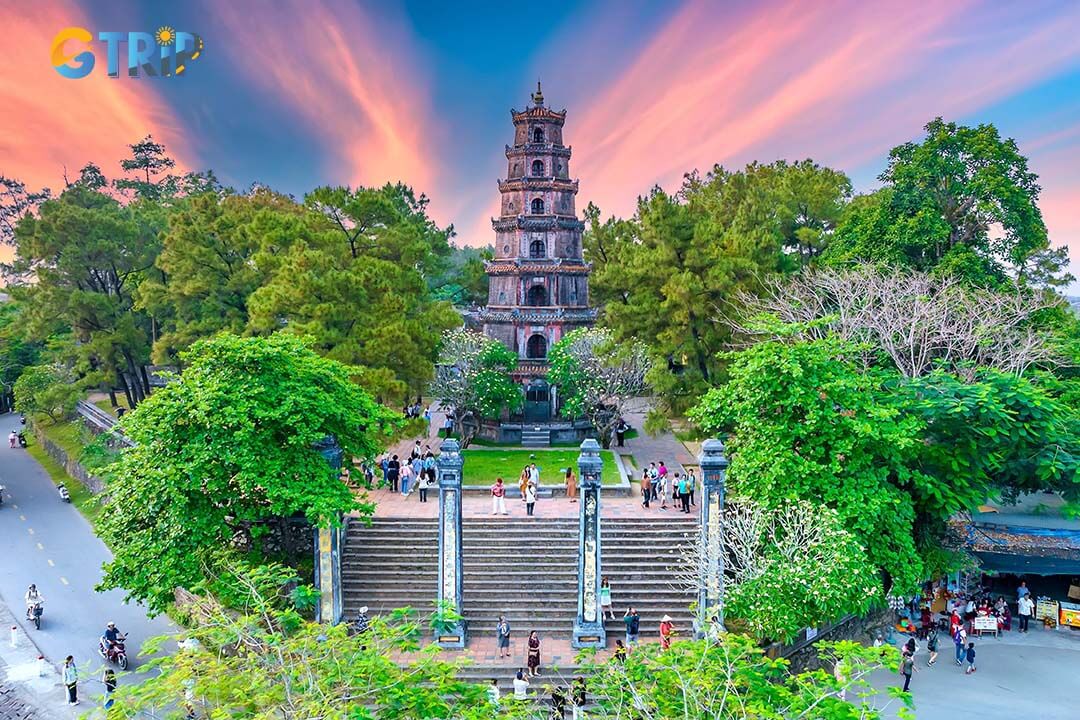
Attend a prayer ceremony at Thien Mu Pagoda, where monks chant sutras, ring bells, and light incense in a tranquil, spiritual setting
Entrance fees and opening hours
Visiting Thien Mu Pagoda is both affordable and accessible, making it a popular destination for travelers exploring Hue. Notably, there is no Thien Mu Pagoda entrance fee, allowing visitors to experience its rich history, architecture, and spiritual atmosphere without cost. This free admission reflects the pagoda’s role as a religious site rather than a commercial attraction.
The pagoda welcomes guests daily, with flexible Thien Mu Pagoda opening hours that accommodate both early risers and those who prefer late afternoon visits. The grounds typically open from 8:00 AM to 6:00 PM, giving visitors ample time to explore its iconic structures and peaceful gardens. However, religious ceremonies, including morning and evening prayers, are reserved for monks and local devotees, ensuring the sanctity of these rituals.
While entry is free, some areas may require small donations to support the maintenance of the temple and its facilities. Parking is available near the entrance, with a nominal Thien Mu Pagoda parking and entrance fee for motorbikes and bicycles, usually around 5,000 to 10,000 VND. Cars may need to park slightly farther from the site due to limited space near the pagoda's gates.
How to get to Thien Mu Pagoda?
Located about 5 kilometers from Hue’s city center, the Thien Mu pagoda is accessible by various transportation options. Each method offers a different experience, depending on your preferences and schedule.
- By motorbike: For travelers seeking flexibility, renting a motorbike is a popular choice. From Hue city center, follow Le Loi Street along the riverbank, then cross Da Vien Bridge and continue along Kim Long Road. The route is straightforward, and the ride takes about 15 minutes. Parking is available near the entrance of the pagoda.
- By taxi or car: Taxis and ride-hailing services like Grab offer a quick and comfortable way to reach Thien Mu Pagoda. A taxi ride from central Hue typically costs around 70,000 to 100,000 VND.

Thien Mu Pagoda is easily accessible from Hue’s city center by motorbike, taxi, or ride-hailing services, each offering a unique travel experience
Dress code and rules for Thien Mu Pagoda’s visitors
Following the Thien Mu Pagoda dress code is essential to show respect for the site’s religious and cultural significance. As a Buddhist temple, the pagoda requires visitors to dress modestly, reflecting the traditions of Vietnamese Buddhism.
- Clothing: Wear garments that cover your shoulders, chest, and knees. Avoid sleeveless tops, shorts, and skirts above the knees. Lightweight long pants and loose shirts are ideal for both comfort and respect.
- Footwear: Remove your shoes before entering prayer halls or sacred spaces, following traditional Buddhist customs.
- Accessories: Refrain from wearing hats, sunglasses, or loud accessories inside worship areas, as they can be seen as disrespectful.
Aside from the Thien Mu Pagoda visitor rules regarding attire, maintaining proper behavior is equally important:
- Silence and respect: Speak softly and maintain a calm demeanor to preserve the temple’s serene atmosphere.
- Photography etiquette: While photography is allowed in most areas, avoid taking photos inside prayer halls or of monks without permission.
- Interaction with monks: When approaching monks, be respectful and avoid interrupting their meditation or rituals. A polite bow is a traditional sign of respect.
Here are practical tips for visiting Thien Mu Pagoda to ensure a smooth experience:
- Visit during the early morning or late afternoon to avoid crowds and experience the tranquil ambience.
- Carry a scarf or shawl in case additional covering is needed.
- Respect the temple’s sacred relics by observing but not touching them.
Other attractions to visit from Thien Mu Pagoda
Nearby attractions included in Hue tours from travel agencies can provide further insight into Hue’s rich history, culture, and natural beauty. Each destination reveals a different aspect of Vietnam’s imperial past and traditional crafts. Check out some of these places below.
Imperial Citadel of Hue (4.4km)
Imperial Citadel of Hue is a UNESCO World Heritage Site that showcases grand palaces, ancient temples, and traditional Vietnamese architecture. Spanning over 500 hectares, the complex is enclosed by towering walls and a moat, symbolizing its historical importance. Inside, explore the Imperial City, Thai Hoa Palace, and Dien Tho Residence, showcasing Vietnam’s last imperial dynasty. Ornate gates adorned with dragon motifs, lotus-filled gardens, and intricately carved wooden structures offer a glimpse into the opulence of the royal court.
The site also hosts traditional performances such as royal court music, recognized as an Intangible Cultural Heritage by UNESCO. For an unforgettable experience, evening visits reveal the Imperial City illuminated by warm lights, creating a captivating atmosphere that highlights its architectural beauty.
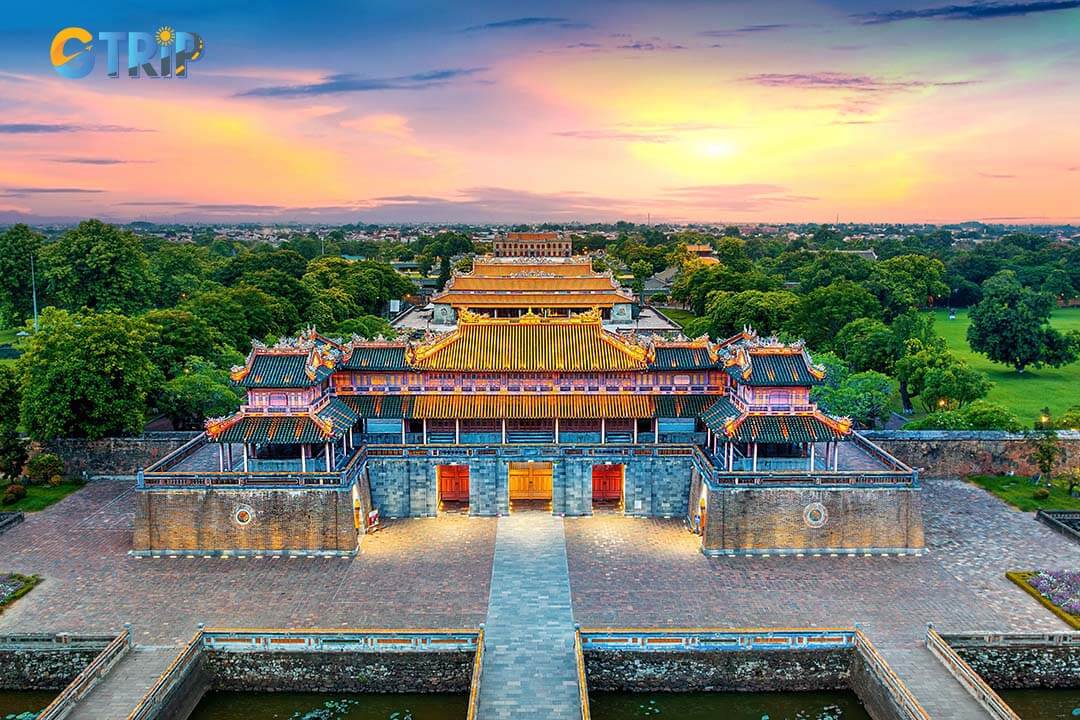
The Imperial City, a UNESCO site, showcases grand palaces, ancient temples, and traditional Vietnamese architecture, reflecting Vietnam’s last imperial dynasty
Thuy Xuan Incense Village (7.6km)
Just a short drive from Thien Mu Pagoda, Thuy Xuan Incense Village is famed for its colorful, handcrafted incense made with age-old techniques. This village offers both cultural insights and stunning photo opportunities. Rows of incense sticks in vivid shades of red, yellow, and purple are arranged in sunburst patterns, making it a favorite spot for photographers. Local artisans demonstrate the incense-making process, from preparing bamboo sticks to coating them with aromatic herbs and powders.
You can even try rolling incense sticks yourself, gaining hands-on experience with this time-honored craft. Beyond incense making, the village also showcases local handicrafts, providing unique souvenirs that capture the essence of Hue’s artistic heritage.
Tu Duc Tomb (8.7km)
Known for its poetic design, the Tu Duc Tomb is the final resting place of Emperor Tu Duc, who reigned from 1847 to 1883. This sprawling complex blends natural landscapes with classical architecture, reflecting the emperor’s appreciation for art and nature. Surrounded by lush pine forests and lotus-filled lakes, the tomb’s tranquil setting creates a peaceful environment perfect for reflection. Architectural highlights include the main pavilion with intricate wooden carvings, stone statues of mandarins and horses, and the emperor’s burial site marked by a stone stele inscribed with his biography.
Unlike other imperial tombs, Tu Duc Tomb was designed as a living retreat, where the emperor would compose poetry and escape the pressures of court life. Visitors can explore the complex’s pavilions, temples, and courtyards while enjoying the peaceful sounds of birds and rustling leaves.

Tu Duc Tomb, a poetic retreat and final resting place of Emperor Tu Duc, harmonizes nature and classical architecture in a serene lakeside setting
FAQs about Thien Mu Pagoda
Thien Mu Pagoda, an iconic Hue landmark, overlooks the Perfume River and embodies Vietnam’s spiritual and historical heritage. Visitors admire its Phuoc Duyen Tower, explore Buddhist traditions, and experience its serene ambiance.
Is Thien Mu Pagoda accessible to people with mobility issues?
Accessibility at Thien Mu Pagoda is limited due to its traditional design and historical preservation. The site features stone staircases leading to the main entrance and additional steps throughout the grounds. You with mobility issues may find it challenging to access upper levels, such as Phuoc Duyen Tower and the main hall. However, the lower courtyard, bell tower, and riverside areas are relatively easier to navigate.
Can visitors take a guided tour of Thien Mu Pagoda?
Yes, guided tours are available and recommended for a deeper understanding of the Thien Mu Pagoda history and its connection to Buddhism in Hue. Local tour guides provide insights into architectural details, religious practices, and historical events that shaped the pagoda's significance. Many tours include additional stops at landmarks like the Imperial City of Hue and the Perfume River Hue, offering a comprehensive cultural experience.
Are there any ghost stories associated with Thien Mu Pagoda?
Among the local legends, one of the most intriguing is the belief that Thien Mu Pagoda is haunted by the spirit of a heartbroken woman. According to folklore, a young couple once pledged their love near the pagoda, but family opposition forced them apart. The woman, devastated, is said to have drowned herself in the Perfume River, and her spirit is believed to linger around the pagoda. This legend contributes to the site’s mystical reputation, though Buddhist monks emphasize the pagoda's role as a place of peace and spiritual reflection.
Thien Mu Pagoda stands as a testament to Vietnam's rich heritage, blending ancient architecture with profound spiritual significance. From the towering Phuoc Duyen Tower to sacred halls adorned with intricate carvings, every corner reflects the legacy of Buddhism in Hue. Visitors can immerse themselves in vibrant Thien Mu Pagoda festivals, discover captivating legends, and capture panoramic views of the Perfume River. Exploring the grounds offers a glimpse into centuries-old traditions, while guided tours provide deeper insights into its history and culture.
If you have the opportunity, experience this iconic site firsthand. Enhance your journey with Hue tours from GTrip - Vietnam Travel Agency, offering expertly curated itineraries that showcase Hue’s most renowned landmarks.

